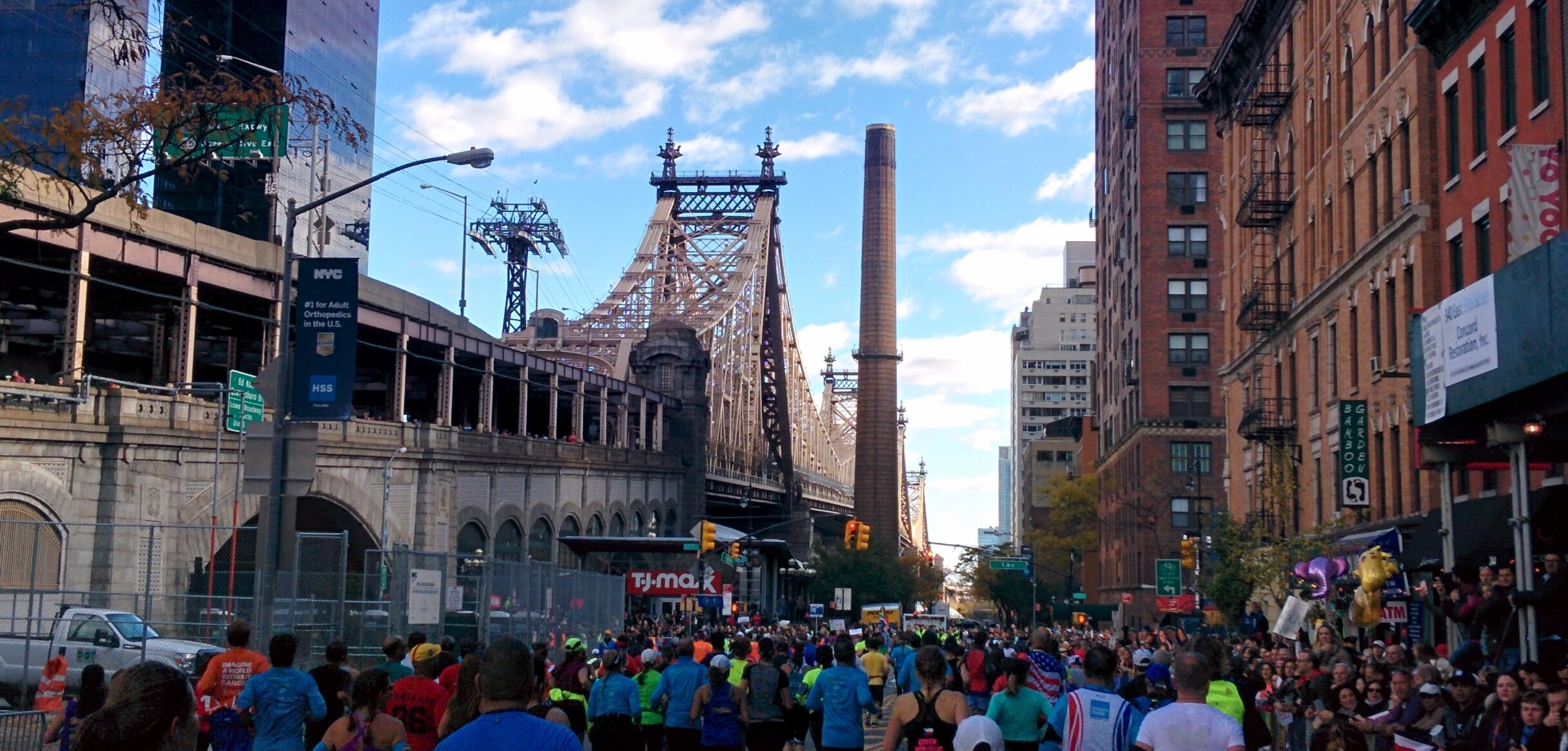News
NOW OFFERING RACE-SPECIFIC TRAINING PLANS!

This week, we’re continuing our series of tips for success in specific sports. This week’s Coach Tip Tuesday is the third in a series about the IRONMAN distance of triathlon. The first two posts discussed the swim and the bike, and this week we’re going to talk about the run.
I said it in the first two posts, but it’s so important that it bears repeating again: Success in triathlon requires athletes to train all three sports - swimming, biking, and running - well. Since most triathletes come into the sport of triathlon via a pathway from a different sport (such as swimming or running), it is not uncommon to find a triathlete who has a strong preference for one of the three sports over the others. As such, the possibility of an imbalance (in terms of training time and focus) is high. When it comes to IRONMAN, my observation has been that athletes - when left to their own devices - run too much when training for this distance.
When looking at the average finish times for athletes at IRONMAN racing, the run leg accounts for 38% of the total race time; at 26.2 miles, it is 19% of the total race distance.
In the sequence of events in an IRONMAN, the run comes third. Based on its timing in the race and the fact that it’s the toughest of the three sports on the body (due to the impact forces that running imposes), this portion of an IRONMAN takes a relatively longer period of time. This being said, despite the fact that the run does take this amount of time in the race, an inappropriate amount of running volume (when compared to the training volume of swimming and biking) will actually be counterproductive.
One of the most important things to remember when training for an IRONMAN is that success in the race itself is determined by how well each leg of the race is executed in succession. The swim needs to go well, and that’s based on how the athlete has prepared for the swim in their training. The bike will only go well if the swim goes well, and that requires an appropriate frequency and volume of training on the bike as well as proper attention given to the swim. The run will only go well if both the swim and the bike are trained sufficiently. An athlete can be an incredibly strong runner, but they will not be able to run well or with strength in an IRONMAN triathlon without sufficient swim or bike training that sets them up for a situation for them to deploy (and maximize) the run fitness and strength that they have.
So, assuming that you’ve taken my advice about swimming and biking to heart, we can now talk about how to successfully train to run to your potential in an IRONMAN. For most athletes, the appropriate training volume of running is much less than one might think.
Because the run comes third in IRONMAN and commences at mile 114.4 of the 140.6-mile race, an athlete racing in an IRONMAN will never (I repeat - never) run on fresh legs. Never. A solid execution of the run leg in an IRONMAN is entirely dependent on the athlete having the appropriate level of durability in their body to run well (read: with good form) with high amounts of accumulated fatigue. This right here is why high frequency and volume of running is not an appropriate choice in an IRONMAN training plan.
More frequent runs and higher volumes of running alone will not prepare an athlete properly for what their body needs to undertake in the run portion of an IRONMAN. This is true even if the actual hours spent training on the run are not what one would consider “high”; when I refer to “high volume” in an IRONMAN training plan, I’m referring to the frequency and/or volume being high proportionally compared with the other disciplines (swimming and cycling).
Rather, athletes seeking to reach their potential in the run leg of an IRONMAN should be sure that they have enough training hours in the other sports over the course of a training week so that their run sessions are being completed in fatigued conditions. Additionally, athletes should ensure that they include functional strength training to help their bodies prepare to be able to physically hold good posture and form (which will lead to being able to run faster). Structural integrity is necessary to be powerful when running. This means that you need to have the strength and durability to get into the right posture to properly load your bones, muscles, and connective tissues to safely handle the explosive forces that running requires.
Two strength sessions per week is what I recommend for athletes preparing for IRONMAN; when it comes time for the Competition and Peak Phases of training, it may be necessary (and best) to scale back to one session per week due to the total amount of training volume in those phases and due to the race-day specific skills that should be included in training in those phases.
Even though they're great to incorporate into a training plan, strength sessions are often what athletes will skip since they don’t appear to be necessary since (at face value) strength work isn’t one of the required elements of a triathlon. For many endurance athletes, strength sessions also aren’t as much fun as swimming, biking, or running. That being said, functional strength sessions are helpful for more than just the running portion of an IRONMAN. The gains made via consistent strength training can significantly enhance one’s experience training in swimming, biking, and running since improved functional strength helps decrease the probability of injury. Additionally, strength training can make those cardio training sessions more effective since the body is more durable; it won’t break down as much and the cellular adaptation that occurs after a workout can be more effective since it’s true adaptation (versus damage, which can come from poor form or unproductive fatigue).
I recommend that age-group athletes have two running sessions in their training schedule per week. As race day gets closer, adding a third running session in the form of a run off of the bike (preferably the long ride) is a good inclusion, as that helps the athlete mentally and physically get used to what it will feel like to run on tired legs right after cycling for a longer period of time. I generally aim to have athletes include this brick run into their schedules when they are 10-12 weeks out from race day, but (like so many things) the actual timing of when I start including that for the athletes I coach can vary from athlete to athlete based on their experience, availability, goals, etc.
In terms of the type of run training sessions, here are the three types I recommend (listed in order of importance to include in a training plan):
In terms of total training volume, running should account for 25-35% of an athlete’s total training hours in a training week. The percentage of total training hours should increase from the lower end of that range (25%) over the course of a training plan, with the higher end of that range (approximately 35%) happening during the Peak Weeks of training.
For a majority of athletes, I recommend using duration as a basis for run training volume when training for an IRONMAN (versus using distance). Duration is much easier to control from a planning perspective (athletes know exactly how long they need to block in their day to complete the training session). Additionally, it is much better in terms of control for how much load will be imposed on the body (which is a fancy way of saying that injury risk can be managed more effectively this way).
There are a lot of factors that can cause significant variances in pacing week-to-week and day-to-day, and with running, that can add up to a risky level of extra training volume. For example, a 16-mile long run would take 2 hours, 40 minutes if the athlete was averaging 10:00 per mile. However, if conditions on a given day cause the athlete to run 11:30 per mile, that same 16-mile long run would take 3 hours, 4 minutes. At face value, that may not look like a lot or seem significant; it’s “only” 24 additional minutes. However, that is a 17.5% difference in time, and that difference is enough to increase injury risk to the athlete by over 21%.
When it comes to race day, I strongly recommend that athletes utilize a run/walk strategy at IRONMAN. The exact ratio of how many minutes of running to how many minutes of walking is appropriate will vary from athlete to athlete, but a good starting place is 9:00 of running to 1:00 of walking. Another approach to consider would be to walk the aid stations and to run in between them. At an IRONMAN, aid stations are available about every mile (this is pretty consistent no matter what IRONMAN race it is), so using them to time walking breaks can be effective since they do occur at regular intervals.
However, the old adage of “nothing new on race day” applies to this run/walk strategy, too. A run/walk strategy is incredibly effective at an IRONMAN since it allows the body to reset (and thus to be able to run stronger with good form longer) and also since it will delay the cardiac drift that will inevitably occur. Managing both of these things will ultimately enable the athlete to run faster over the entirety of the run compared with if they try to run continuously. This being said, it’s important to implement this strategy in training so that it can feel good and be as effective as possible on race day.
Many athletes express resistance to the idea of incorporating walking breaks into training because they feel that it is difficult to resume running again after taking a break. This can be true. However, in my experience, training this way reduces that sensation of difficulty, as the mind adapts and understands that starting running again after a walking break is “normal.” Additionally, most age group athletes will end up walking at some point in an IRONMAN run, whether they want to or not, because their heart rate goes too high, their body starts to break down, or both.
Just like with hydration, if you wait until you “have” to take these breaks you’ve waited until it’s too late. Your physical performance is already suffering and will continue to suffer exponentially from that point on. From a mental perspective, this situation (feeling so broken down that you have to walk) feels very defeating. That mental headspace then snowballs and impacts physical performance even further. If the walking breaks are planned from the beginning and as a strategy, then they won’t feel defeating; rather, they will serve their purpose of being a solid reset of the body and the mind. Therefore, performance throughout the entire run leg will be more consistent. In short, this strategy can help you reach your potential.
Over the course of my coaching career, I’ve observed that the athletes who have had the strongest and best races at IRONMAN didn’t overthink the swim, spent a sufficient amount of time on the bike, didn’t run too much in training, regularly incorporated strength training, and planned for a realistic and appropriate strategy to deploy on race day. Hopefully, you will consider these tips about run training as you build to your IRONMAN so you can reach your potential on race day.
While we’re done talking about the three legs of an IRONMAN, we’re not quite done with this specific type of race yet! Next week, we’ll be talking about the “extras” that make up the “fourth discipline” of an IRONMAN.



































































































Have a question or ready to get your TRAINING started?
Fill out our Contact Form to the right and we will get back to you shortly!